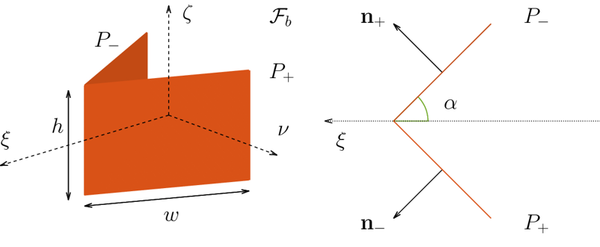Solar sails are a low-thrust propulsion system that takes advantage of solar radiation pressure (SRP) to accelerate a probe using a highly reflective surface. A common practice in the literature on solar sailing is to assume that the attitude of spacecraft with a solar sail is fixed with respect to the direction of sunlight. An almost fixed attitude can be attained with sails whose shape cancels, on average, the components of the acceleration due to the SRP in the directions that are different from that of sunlight.
In a recent paper by Narcís Miguel and Camilla Colombo, sails that consists of 2 attached panels with a shuttercock-like shape are studied to justify theoretically the long-term attitude stability with respect to the direction of sunlight. This is done by exploiting the fast-slow nature of the attitude-orbit dynamics, namely by averaging with respect to the fast-oscillatory motion. The paper includes numerical test cases that support the developed theory.

